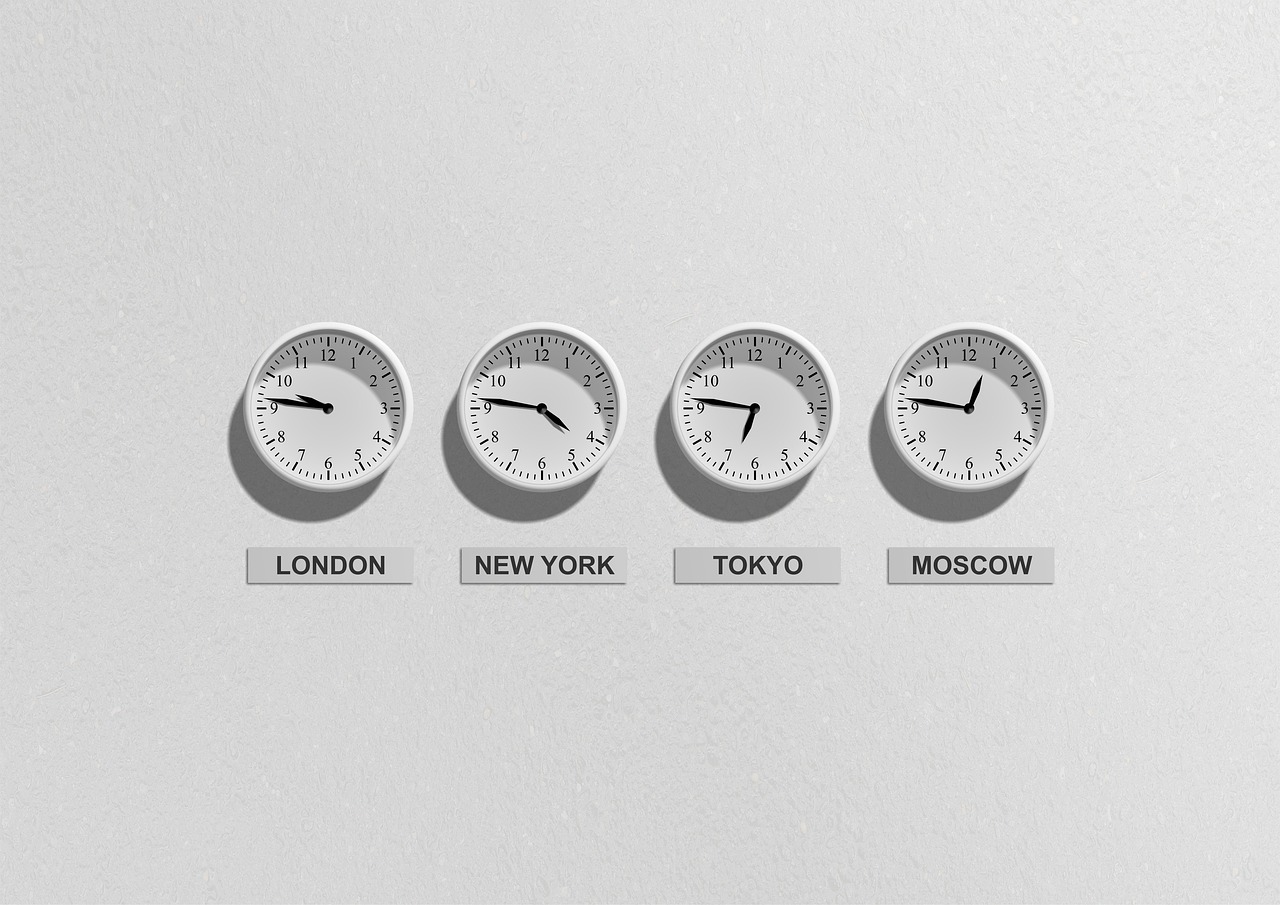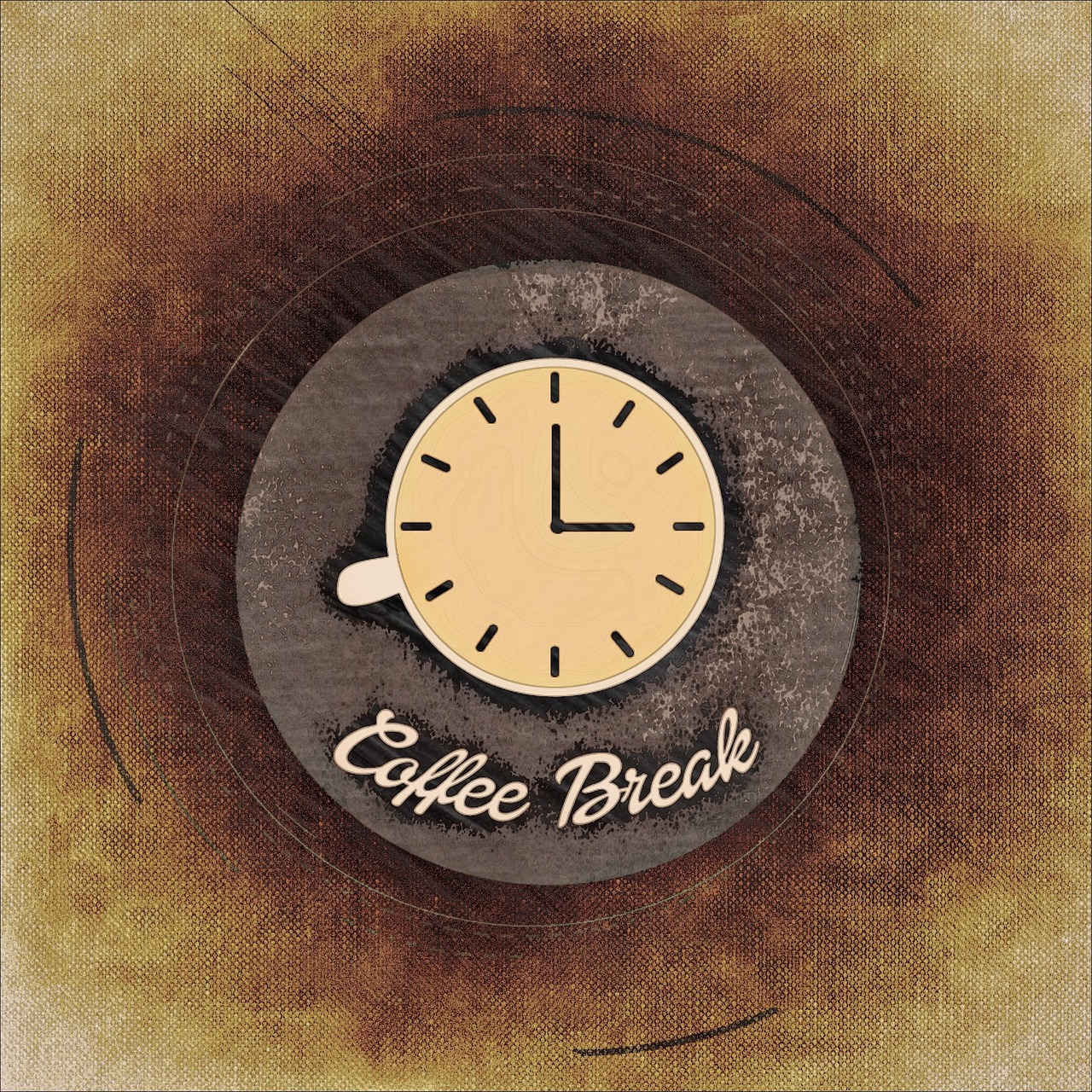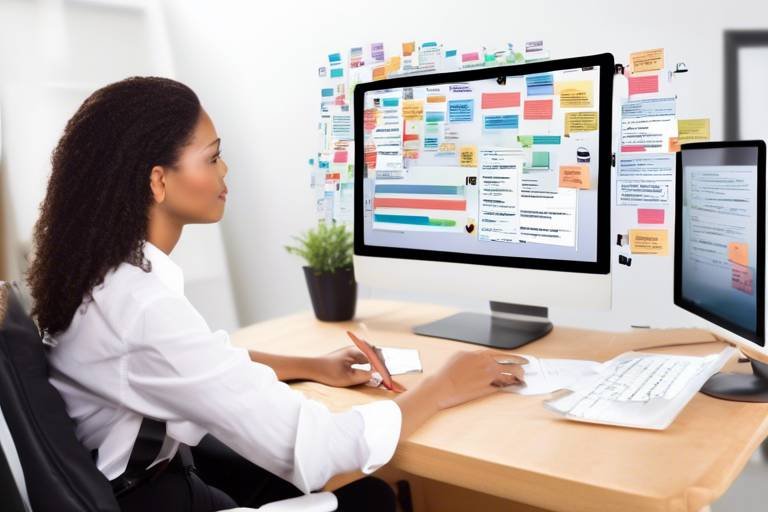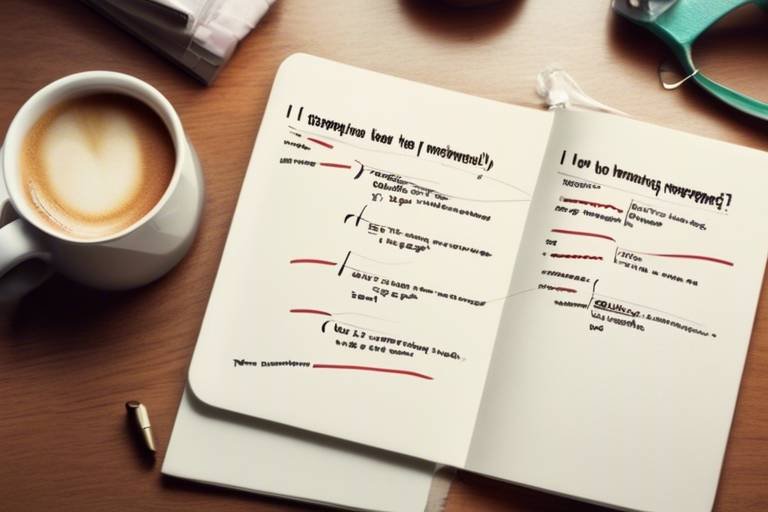How to Incorporate Regular Breaks into Your Work Routine
Do you find yourself feeling overwhelmed and drained by the constant demands of your workday? Incorporating regular breaks into your work routine can be a game-changer when it comes to boosting your productivity and overall well-being. By taking strategic breaks throughout the day, you can recharge your energy, enhance your focus, and prevent burnout.
Imagine your workday as a marathon rather than a sprint. Just like a runner needs to pace themselves and take water breaks to perform at their best, you too need to incorporate breaks into your work routine to maintain peak performance. It's not about working harder but working smarter by giving yourself the necessary time to rest and rejuvenate.
Creating a break schedule that aligns with your natural energy levels and work demands is essential. Consider your peak productivity hours and schedule your most challenging tasks during those times. Then, plan short micro-breaks to give your brain a quick reset and longer restorative breaks to prevent mental fatigue.
Optimizing your break time is key to reaping the benefits of these pauses. Instead of mindlessly scrolling through your phone or staying glued to your desk, consider engaging in activities that truly recharge you. Whether it's taking a brisk walk, practicing mindfulness, or having a quick chat with a colleague, choose activities that help you relax and refocus.
Overcoming feelings of guilt or resistance towards taking breaks is a common challenge for many individuals. However, it's important to recognize that breaks are not a luxury but a necessity for maintaining your well-being and productivity. By prioritizing self-care and setting boundaries around your break time, you can create a more sustainable work routine.
Communication is key when it comes to incorporating breaks into your work routine. Clearly communicate your needs to your colleagues and supervisors, and advocate for a work culture that values and supports regular breaks. By setting boundaries and fostering a culture of well-being, you can create a more balanced and productive work environment.
For those navigating remote work, the challenge of incorporating regular breaks may seem even more daunting. However, with the right strategies in place, you can effectively integrate breaks into your remote work routine. From scheduling virtual coffee breaks with colleagues to setting clear boundaries between work and personal time, there are various ways to prioritize self-care in a digital work environment.
Monitoring and adjusting your break routine is crucial to ensuring its effectiveness. Take the time to reflect on how your breaks are impacting your productivity and well-being. If you notice areas for improvement, don't hesitate to make adjustments to your break schedule to better suit your needs and optimize your workday.

Understanding the Benefits of Breaks
In this article, we will explore the importance of taking breaks during work hours and provide tips on how to seamlessly integrate them into your daily routine for improved productivity and well-being.
Breaks are not just moments of rest; they are essential for maintaining optimal performance throughout the workday. By taking regular breaks, you give your mind a chance to recharge and refocus, leading to increased productivity and creativity. These moments of respite can prevent burnout and help reduce stress levels, ultimately improving your overall well-being.
Research has shown that our brains can only maintain high levels of focus for a limited amount of time before needing a break. By understanding the benefits of breaks, you can harness their power to enhance your focus, creativity, and work performance.
Imagine your mind as a muscle that needs time to recover after intense exercise. Just like how a weightlifter rests between sets to perform at their best, taking breaks allows your brain to recover and perform at its peak capacity.
Moreover, breaks can spark new ideas and insights by giving your brain the opportunity to wander and make new connections. They can be the catalyst for innovative solutions to challenging problems, making your work more efficient and effective.
By incorporating breaks into your work routine, you are not only prioritizing your well-being but also setting yourself up for success in the long run. Embrace the benefits of breaks and watch how they transform your workday for the better.

Types of Breaks to Consider
When it comes to incorporating breaks into your work routine, it's essential to consider the different types of breaks that can benefit your overall well-being and productivity. One type of break to consider is micro-breaks, which are short, frequent pauses throughout your workday. These brief moments allow you to rest your eyes, stretch your muscles, and clear your mind before diving back into tasks.
Another valuable type of break is a restorative break, which involves taking a longer period to recharge and rejuvenate. This could include going for a walk outside, practicing deep breathing exercises, or simply taking a power nap. Restorative breaks are crucial for replenishing your energy levels and enhancing your focus for the remainder of the day.
Additionally, social breaks can play a significant role in your work routine. These breaks involve engaging with colleagues, friends, or family members to foster social connections and combat feelings of isolation. Whether it's a quick chat over coffee or a virtual team building activity, social breaks can boost morale and create a sense of community in the workplace.

Creating a Break Schedule
In this article, we will explore the importance of taking breaks during work hours and provide tips on how to seamlessly integrate them into your daily routine for improved productivity and well-being.
Discover the positive impact that regular breaks can have on your focus, creativity, and overall work performance, as well as their role in reducing stress and preventing burnout.
Explore different types of breaks, such as short micro-breaks, longer restorative breaks, and social breaks, and learn how each can contribute to your overall well-being and productivity.
Creating a break schedule is essential for maintaining a healthy work routine. By strategically planning your breaks, you can optimize your productivity and well-being throughout the day. Consider your natural energy levels and work demands when crafting your schedule to ensure it aligns with your needs.
Discover strategies for making the most of your breaks, including engaging in physical activity, mindfulness practices, social interactions, and other activities that can help you recharge and refocus.
Address common feelings of guilt or resistance towards taking breaks, and learn how to prioritize self-care and establish boundaries to protect your well-being and productivity.
Explore the importance of setting boundaries around your break time, communicating your needs to colleagues and supervisors, and fostering a culture that values and supports regular breaks.
Discover strategies for incorporating regular breaks into your remote work routine, overcoming challenges related to virtual communication, and maintaining work-life balance in a digital environment.
Learn how to monitor the effectiveness of your break routine, identify areas for improvement, and make adjustments as needed to ensure that your breaks continue to enhance your productivity and well-being.

Optimizing Your Break Time
When it comes to optimizing your break time, it's crucial to make the most of these moments to recharge and refocus. One effective strategy is to engage in physical activity during your breaks. Whether it's a quick walk around the block or some stretching exercises at your desk, physical movement can help boost your energy levels and clear your mind for better concentration.
In addition to physical activity, mindfulness practices can also be beneficial in optimizing your break time. Taking a few minutes to practice deep breathing, meditation, or simply being present in the moment can help reduce stress and increase mental clarity, setting you up for a more productive work session ahead.
Social interactions during breaks can also play a significant role in optimizing your time off. Connecting with colleagues or friends, even virtually, can provide a sense of community and support, helping to alleviate feelings of isolation and boosting your mood for the rest of the day.
Another way to optimize your break time is to engage in activities that bring you joy and relaxation. Whether it's listening to music, reading a book, or enjoying a cup of tea, incorporating activities that you love during your breaks can enhance your overall well-being and make returning to work more enjoyable.
Remember, the key to optimizing your break time is to tailor these moments to your preferences and needs. Experiment with different activities and routines to find what works best for you, and don't hesitate to adjust your break time strategies as needed to ensure that you are making the most of these valuable moments throughout your workday.

Overcoming Guilt and Resistance
When it comes to incorporating regular breaks into your work routine, one of the biggest hurdles you may face is overcoming feelings of guilt and resistance. Many individuals tend to associate taking breaks with slacking off or being unproductive. However, it's essential to understand that breaks are not a sign of weakness but rather a strategic move to enhance your overall performance.
Imagine your mind and body as a high-performance car. Just like a car needs pit stops to refuel and maintain its optimal performance, your mind and body also require breaks to recharge and operate efficiently. Ignoring this need for breaks is like driving a car without ever stopping for maintenance – eventually, it will break down. By reframing breaks as essential for your well-being and productivity, you can start to overcome the guilt and resistance that may be holding you back.
It's important to recognize that taking breaks is not a luxury but a necessity. Research has shown that regular breaks can actually boost creativity, focus, and productivity. So, instead of feeling guilty about taking a few minutes to rest and recharge, remind yourself that breaks are an investment in your overall performance and well-being.
If you find yourself struggling with guilt or resistance towards taking breaks, start by setting small goals. Begin with incorporating short micro-breaks throughout your day and gradually extend the duration of your breaks as you become more comfortable with the idea. By taking small steps and recognizing the positive impact breaks have on your work, you can slowly overcome any lingering guilt or resistance.

Setting Boundaries and Communicating Needs
Setting boundaries and communicating needs are crucial aspects of incorporating regular breaks into your work routine. By clearly defining when you will take breaks and communicating your needs to colleagues and supervisors, you establish a framework that supports your well-being and productivity. It's like setting up guardrails along a winding road to ensure you stay on track and reach your destination safely.
One effective way to set boundaries is by creating a schedule that designates specific break times. This not only helps you stay organized but also communicates to others when you are unavailable for work-related tasks. It's akin to signaling to others that you are temporarily stepping off the main stage to recharge before returning with renewed energy and focus.
Communicating your needs is equally important, whether it's expressing the type of break that works best for you or discussing the importance of uninterrupted break time. Just like in a team sport, effective communication ensures that everyone is on the same page and working towards a common goal. By openly sharing your needs, you create a supportive environment that values self-care and recognizes the benefits of regular breaks.
In some cases, you may encounter resistance or pushback when setting boundaries or communicating your needs. It's essential to stay firm in your decision to prioritize self-care and well-being. Remember, just as a plant needs water and sunlight to thrive, you need breaks to nourish your mind and body for optimal performance.
Setting boundaries and communicating needs go hand in hand in creating a work environment that values balance and respects individual well-being. By establishing clear guidelines and openly expressing your needs, you pave the way for a healthier and more productive work routine.

Incorporating Breaks into Remote Work
Working remotely offers many benefits, such as flexibility and comfort, but it can also blur the boundaries between work and personal life, making it challenging to take breaks. Incorporating regular breaks into your remote work routine is crucial for maintaining productivity and well-being. One effective strategy is to schedule specific break times throughout the day, just as you would in a traditional office setting. Setting alarms or reminders can help you stay on track and ensure you step away from your workspace.
Another approach is to utilize the Pomodoro Technique, which involves working for a set period, typically 25 minutes, and then taking a short break. This method can help you stay focused during work intervals and provide structured break times to rest and recharge. Additionally, consider incorporating movement breaks into your remote work routine. Physical activity not only boosts energy levels but also enhances cognitive function, improving your overall work performance.
When working remotely, it's essential to establish boundaries between work and personal time. Designate a specific workspace in your home to create a physical separation between work and leisure. Communicate your break schedule with your colleagues or supervisor to manage expectations and ensure uninterrupted break times. By setting clear boundaries, you can protect your well-being and prevent burnout while working remotely.

Monitoring and Adjusting Your Break Routine
When it comes to incorporating regular breaks into your work routine, it's essential to monitor and adjust your break routine to ensure that you are reaping the full benefits of your time off. Monitoring involves keeping track of how your breaks are affecting your productivity, focus, and overall well-being. By paying attention to how you feel before and after taking breaks, you can identify patterns and determine what works best for you.
Adjusting your break routine is equally important to maximize the positive impact of your time off. If you notice that certain types of breaks or activities are not helping you recharge effectively, it may be time to switch things up. Experiment with different break durations, activities, and timing to find the optimal formula that boosts your productivity and well-being.
One effective way to monitor and adjust your break routine is to keep a break journal where you record the duration and activities of each break, along with how you feel afterwards. This can provide valuable insights into what energizes you and what leaves you feeling drained, helping you fine-tune your break schedule for maximum benefit.
Frequently Asked Questions
- What are the benefits of taking regular breaks?
Regular breaks can improve focus, creativity, and overall work performance. They also help reduce stress and prevent burnout.
- What types of breaks should I consider incorporating into my work routine?
You can consider short micro-breaks, longer restorative breaks, and social breaks to enhance your well-being and productivity.
- How can I create a personalized break schedule?
To create a personalized break schedule, align it with your natural energy levels and work demands to maximize the benefits of your time off.
- What are some strategies to optimize break time?
Engage in physical activity, mindfulness practices, social interactions, and other activities to recharge and refocus during your breaks.
- How can I overcome feelings of guilt or resistance towards taking breaks?
Address common feelings of guilt or resistance by prioritizing self-care, establishing boundaries, and recognizing the importance of breaks for well-being and productivity.
- Why is it important to set boundaries and communicate break needs?
Setting boundaries around break time, communicating needs to colleagues and supervisors, and fostering a culture that values breaks are essential for well-being and productivity.
- What are some strategies for incorporating breaks into remote work?
Strategies for incorporating breaks into remote work include overcoming virtual communication challenges and maintaining work-life balance in a digital environment.
- How can I monitor and adjust my break routine for effectiveness?
Monitor the effectiveness of your break routine, identify areas for improvement, and make adjustments as needed to ensure breaks continue to enhance productivity and well-being.

















